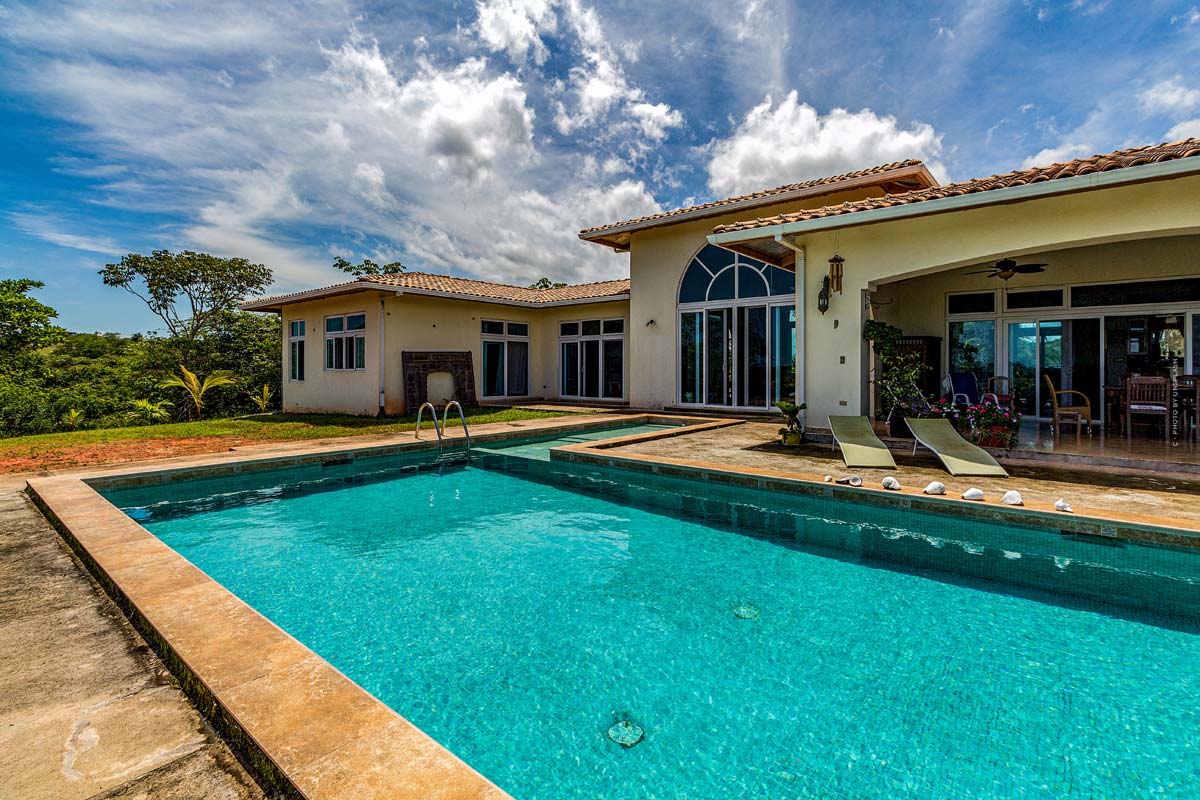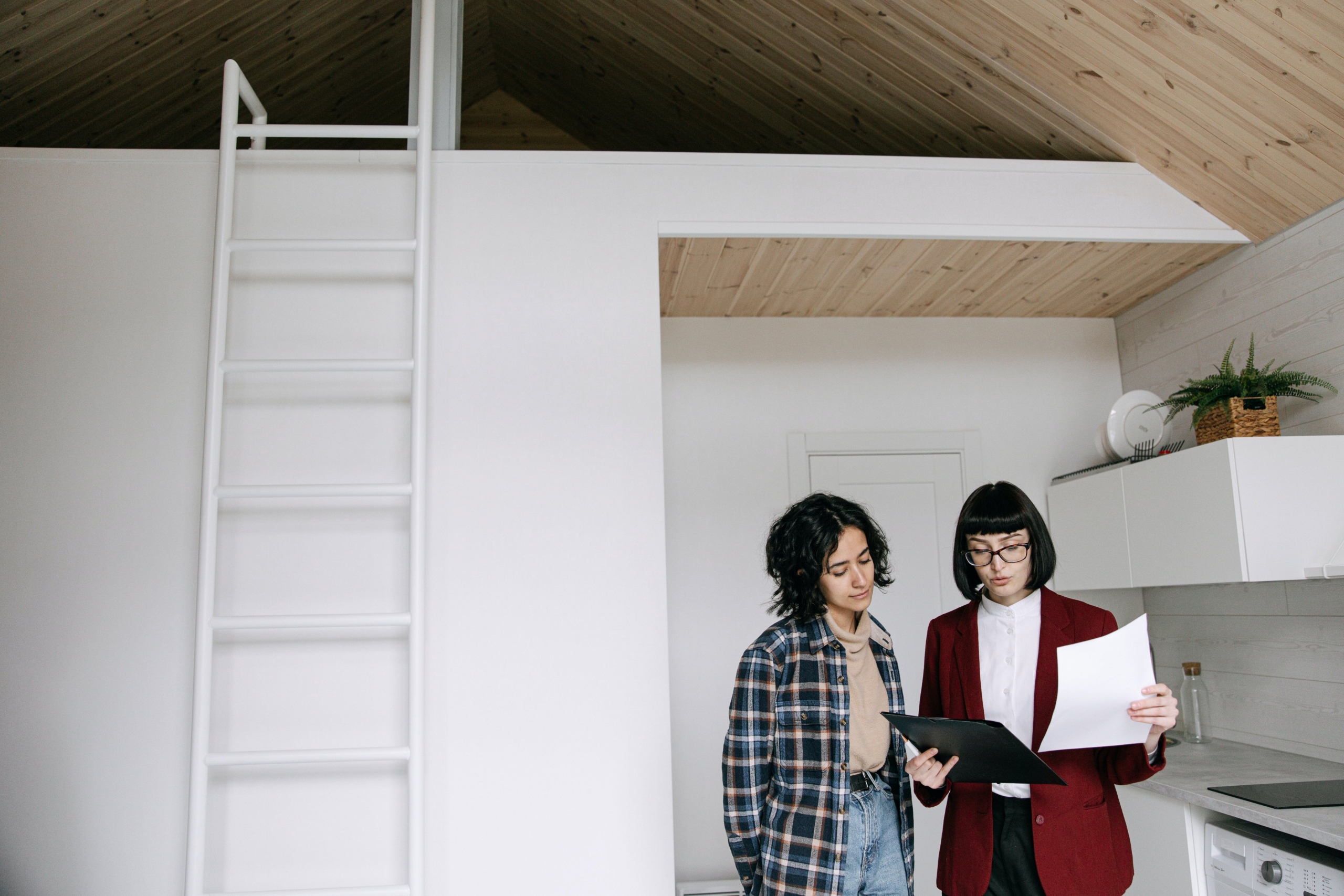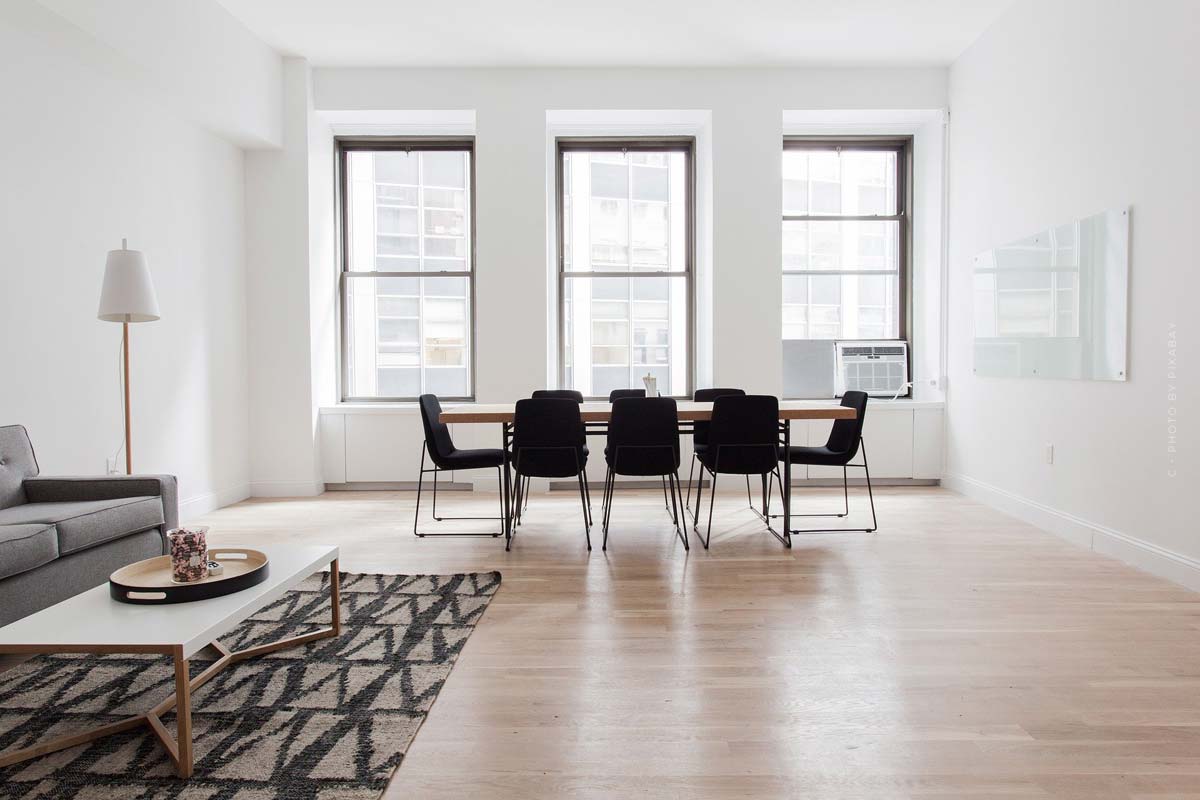Risk when buying real estate: vacancy, loss of rent and negative yield effect
Risk when buying real estate – 50 euros more loan installment per month and things get tight? You should never run into a liquidity bottleneck when buying. We have already discussed the question “How much property can I afford?” in the guide Maximum purchase price. Our focus today: vacancies. Rising rental income is great for you as an investor, falling rental income (e.g. due to vacancy) is difficult. Problems with the bank. Unexpected costs. Typical mistakes when buying a property when buyers are not well prepared – a look at the risk of vacancy and loss of rent.
Loss of rent: yield effect
Vacancies, rent arrears or even re-letting and tenant selection. There is a lot for you to consider when buying real estate. Even if you have found a profitable property in the real estate acquisition process with a good property yield, 2 or 3 months of vacancy per year can make your investment suddenly unprofitable. Why and why is the choice of location / property type so important? You can find out more here in the Real estate purchase risk guide.
This guide is therefore about raising awareness of the topic of location selection and property type. When buying a property, in most cases you are taking over the current tenant. It is therefore important to always check the seller’s tenant history!
Loss of rent = you pay the costs instead of your tenant
Let’s start with the topic of vacancies.
Reasons for vacancies and rent losses
Tenants who don’t want to pay quickly make an investment unprofitable. But it doesn’t always have to be the worst-case scenario – rental nomads are rare – rent defaults can also occur because your tenant has financial difficulties and can no longer pay the rent on time. Or a change of tenant when you move and your new “ideal” tenant only moves in a month or two later.
In addition, there are structural changes, long-term vacancies, when the location becomes unattractive for tenants.
There are therefore many reasons for rent losses:
- Rent not paid – tenant has financial problems
- Vacancy, e.g. for new tenants – “desired” tenant arrives later
- Vacancies due to structural changes – in 5, 10, 15 years
Location + property + tenant selection
In addition to the choice of location and type of property, you, as the future landlord of a capital investment, also need to select tenants.
Let’s take a worst-case scenario as an example. Your tenant refuses to pay the rent, regardless of whether for personal reasons or financial reasons, and it takes 9 months to file an eviction suit. If the tenant himself is not sufficiently solvent, you will never see your money (costs of the eviction action) again.
Central, think about:
- Choice of location – structural vacancy? Less housing in the future
- Real estate type – How do you live? Micro apartment, instead of loft apartment
- Tenant selection – Who is a tenant? Creditworthiness (and trust)
The better you prepare for this when buying your first property, the better.
Vacancy or not: loan installment must be paid
The vast majority of people finance their property. This means that you give about 15% equity and a bank gives you the rest (85%) as a loan. You repay the loan. The monthly installment of repayment and interest is called the loan installment. The bank doesn’t care if your tenant gets into trouble. You have to pay the monthly installment.
No matter what happens:
All costs continue to run!
Vacancies: influence on real estate yields
When buying real estate as a capital investment, the main focus is on returns. Simply put, the rental yield indicates how much rental income you achieve in relation to the investment (purchase price of the property, ancillary costs, maintenance). The result is a percentage. The higher, the better.
Example (simple):
- Investment in real estate: 100,000 euros
- Rental income / year: 3,000 euros
- Yield = 3%
3% would be relatively low, as you have to expect around 6% for interest/repayment and maintenance (currently). This means that your property must yield at least 6% to cover the costs.
As soon as you slip below ~ 6% yield, you pay more
Assuming you have calculated extremely tightly when buying real estate. So that you just achieve a 6% return, which covers the management / loan installment (interest and repayment). Now you have only 2 months of rent loss – the calculation is no longer correct and the yield drops to 5%. At 5%, the “missing” percent has to be paid out of your own pocket.
Calculation: Return effect 2 months default
Let’s now calculate with the extremely tightly calculated 6% yield property. The big goal in all our guides:
Your tenant pays for your property = good return
Example 6% yield with full rental payment:
- Investment in real estate: 100,000 euros
- Rental income / month: 500 euros x 12
- Rental income / year: 6,000 euros
- Yield = 6%
Example effect of loss of rent (2 months):
- Investment in real estate: 100,000 euros
- Rental income / month: 500 euros x 10
- Rental income / year: 5,000 euros
- Yield = 5%
That means 1,000 euros out of your own pocket this year.
– 1,000 euros instead of “Tenant pays for your property”
Financial freedom? That’s why preparation is so important!
Tenants should therefore always be closely scrutinized. You should do a really thorough check.
- Self-disclosure
- Previous landlords speak
- Schufa information
- …
Rent arrears and reserves
It doesn’t always have to be a complete loss of rent. In practice, there are many reasons, for example, your tenant may not accept a rent adjustment following modernization measures. In other words, you modernize and adjust the rent and your tenant refuses to accept the rent increase.
Here, too, you are faced with the problem that you have made your investments and suddenly the tenant refuses. A dispute like this can go on for a long time and, in the worst case scenario, it can take 6 – 12 months before an eviction action is brought.
So that you can go into your first property without any worries, remember this:
Build up reserves!
What does that mean?
Building up reserves: security for the first property
Ideally, protect yourself financially against two possibilities:
- Reserve for maintenance
- Reserve for rent losses
- Reserve for all eventualities
Reserves do not have to be set aside. However, they protect you from costs that you may not know how to cover spontaneously. Because, as you have learned, it doesn’t matter whether it’s rent arrears, loss of rent or vacancy:
All your costs continue to run
Reserve for maintenance
One cost factor that you will always have to bear is maintenance. More or less, of course, depending on the year of construction and condition of the property. In general, however, you already calculate 2% reserves for maintenance in the first yield calculation.
Part of the yield calculation, 2% maintenance reserve:
2% reserve for maintenance
Property for 100,000 euros (investment) = 2,000 euros reserve / year
Reserve for rent losses
In addition, a 6% rent reserve is recommended for possible rent losses:
+ 6% reserve for rent losses
Property for 100,000 euros = 6,000 euros reserve
6% would also correspond to a return of 6% = 1 annual rent.
Reserve: Extra, for all eventualities
Especially for the first property, without large assets of your own (as a rule), you should think about an additional reserve. Why? So that you never run out of money and miss a payment to the bank.
Ideally for the first property, not a must but security:
+ 10% extra reserve
Property for 100,000 euros = 10,000 euros reserve
Follow-up financing: risks and interest rate changes
Vacancies not only have a negative effect on yields. Most property loans have a fixed interest rate with a fixed term. At the end of the term, the conditions are renegotiated, known as follow-up financing.
This is where the 2 central aspects come into play again:
- Choice of location – structural vacancy? Less housing in the future
- Real estate type – How do you live? Micro apartment, instead of loft apartment
Lending: Factors
The bank also follows a clear path for follow-up financing. Let’s say you fixed the interest rate for 10 years for your first real estate financing. After 10 years, with 25 normal repayments, the remaining debt is around 76%. This must now be financed.
For follow-up financing, go back to your bank or to another one. If you are offered better conditions, it is worth obtaining alternative offers for the follow-up financing. Bank A, B, but also C will take another focused look at your property and you:
- Real estate
- Creditworthiness
Structural change: lower property valuation
Factor 1: Structural change – Because everyone is reassessed for the follow-up financing. Let’s say your fixed interest rate expires after 10 years and the bank says the property is now worth 20% less, for example because many people have moved out of the region in the last decade, property prices are falling and so on.
Banks want security, if the property is then worth less, the bank would have lost money in the worst-case scenario (loan installment defaults, forced sale/auction). So the interest rate rises.
Interest rate change: interest rate development in 10, 15, 20 years
Factor 2: Interest rate changes – Interest rates are currently lower than ever. It is impossible to make a serious forecast of what interest rates will be in 10, 15 or even 20 years’ time. However, a look back shows that interest rates in this country were still above 8% until 1990, 4-6% until 2000 and currently only 1-2% for real estate loans. If interest rates fall, it’s great for your follow-up financing. However, if interest rates rise, it’s bad, because then you pay more and the return calculation no longer works.
What to do? Tips for good returns
First of all: keep your eyes open when buying real estate!
Don’t buy yourself any problems!
Don’t buy yourself any problems, learn here with us step by step how to buy your first property, from the preparation, to the acquisition (finding profitable properties), to the purchase contract. By the time you’ve read our guide to buying your first property, you’ll know how important it is to find profitable properties in the real estate acquisition process.
Read here again:
3 tips: Low interest rates
You now know that it is very unfavorable if the property suddenly costs money instead of bringing in money. What can you do? Here are 3 simple tips:
Tip 1: Buy cheaply – It sounds simple, but “the profit is in the purchase”. A piece of business wisdom that is also true when buying real estate. Buying cheaply means finding a property that is sold below market value, or that you, as the buyer, buy below market value. We have more on this topic here: Buying real estate.
Tip 2: Fixed interest rate – If you fix your interest rate for 10 years, you will have to take care of follow-up financing in 10 years. The longer the fixed interest rate, the longer you don’t have to worry about interest rate changes. To maintain the current low interest rates, you can agree a longer fixed interest rate, for example 15 years or 20 years. In case of doubt, until the end of the loan.
Tip 3: Higher repayments – If interest rates explode and ruin many yield calculations, higher repayment installments are an option to reduce interest rates. Interest is always calculated on the basis of the debt or, from the first payment, on the basis of the remaining debt. The lower the remaining debt, the lower the interest. With the current low interest rates, however, it is worthwhile financing real estate over a long period of time, as inflation ensures that your loan installment is always “smaller” in terms of purchasing power.
You can also start financing with more equity right at the beginning. This means that the loan amount is smaller and so is the repayment. This means that the loan is repaid more quickly and long-term interest rate changes no longer affect your financing.
Let’s summarize the 3 tips once again:
- Purchase price – Buy cheaply (below market value)
- Fixed interest rates – agree longer fixed interest rates (15 years, 20 years)
- Repayment rate – Repay more or start with higher equity
Here are 2 practical tips for finding “problem-free” properties:
2 tips: Real estate viewing
Here are 2 practical tips for your real estate search.
Tip 1: Pay attention to the property management company – Is the property management company doing a good job from your perspective? In other words, do you have the feeling that the property management company knows what it is doing?
Tip 2: Owner-occupiers in the house – When you view properties, you also make sure that there are a few owner-occupiers living in the house. You tend to make sure that the property remains “well-maintained” in terms of its condition and the tenants.
In short, you pay attention to:
- Property management and trust
- Owner-occupier in the house










